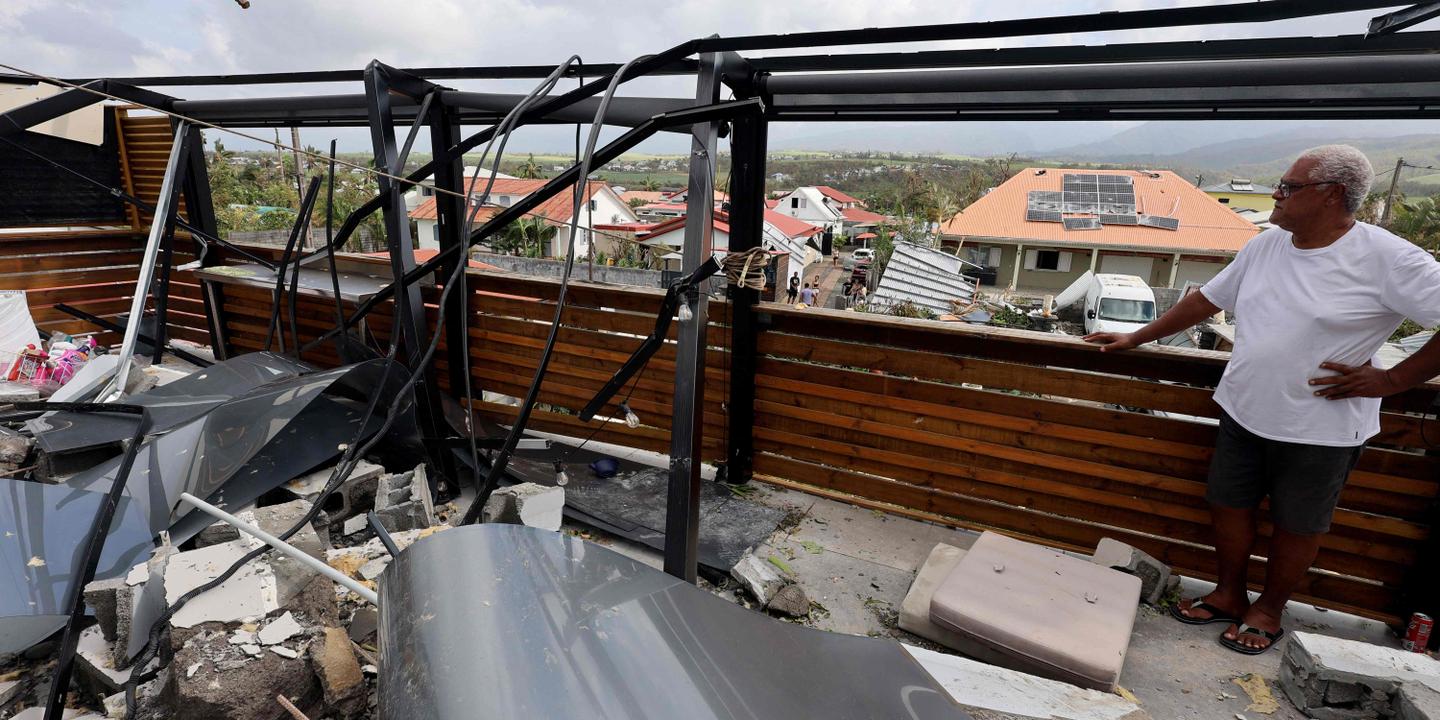
La Réunion Grapples with Aftermath of Cyclone Garance: Recovery Begins Amidst Devastation
Two days after Cyclone Garance unleashed its fury on the island of La Réunion, claiming four lives, the focus has shifted to the daunting task of cleaning up and clearing debris. The island is reeling from the cyclone’s impact, with widespread damage to infrastructure and homes. Restoration efforts are underway, but the scale of the destruction is significant.
Power outages remain a major concern. EDF, the island’s electricity provider, announced that as of 1 PM local time (10 AM Paris time), 50% of customers who had lost power had been reconnected. However, a considerable 90,000 customers are still without electricity, highlighting the extensive damage to the power grid. Crews are working tirelessly to restore power to affected areas, but the process is slow and painstaking due to the widespread damage and difficult terrain.
The reopening of the coastal road connecting the west and north of the island brought a measure of relief. This vital artery, partially built on the sea, had been closed since Thursday evening due to the storm surge and high winds. Its reopening allows for the easier movement of people and supplies, which is crucial for the recovery efforts. However, other roads across the island remain impassable or hazardous, hindering access to affected communities.
Despite pre-emptive preparations, the severity of Cyclone Garance caught many off guard. Bruno Retailleau, the Minister of the Interior, acknowledged the cyclone’s intense power in an interview with Le Figaro. He emphasized the government’s commitment to supporting the affected population, announcing that two waves of national reinforcements are on their way to La Réunion.
The initial wave includes a contingent of approximately one hundred firefighters from Mayotte, equipped with five tons of essential equipment. This specialized team will provide much-needed assistance in search and rescue operations, as well as clearing debris and managing hazardous situations. An additional squadron of gendarmerie is also being dispatched to maintain order and security in the affected areas.
Following closely behind, another hundred personnel from the Sécurité Civile, France’s civil defense agency, are arriving from mainland France. This highly trained team will bring specialized expertise in disaster relief, including medical assistance, logistical support, and structural assessment of damaged buildings. The influx of reinforcements underscores the French government’s commitment to helping La Réunion recover from this disaster.
The scale of the devastation is immense. According to the Prefect of La Réunion, the island, home to over 880,000 people, is "disfigured" by the passage of the "brutal and powerful" cyclone. Many localities have suffered not only from fierce winds but also from mudslides caused by overflowing rivers and ravines. These mudslides have inundated homes and businesses, further compounding the damage caused by the wind.
Even before the full extent of the damage was known, the Prefect of the island, Patrice Latron, warned of the significant work required to restore the island. He highlighted the numerous roads blocked by fallen trees and branches, flooded roadways, and bridges that have been washed away or rendered unusable. These infrastructural challenges are hindering the delivery of aid and the movement of recovery teams.
Amidst the ongoing efforts to restore essential services and clear debris, many residents are expressing their frustration and despair. One resident of La Colline, a remote neighborhood in Saint-Denis, lamented the loss of everything, pointing to a scene of utter devastation: twisted metal sheets, uprooted trees, and debris covered in mud. La Colline’s difficult accessibility, requiring off-road vehicles, further complicates the delivery of aid and the assessment of damage.
Despite the challenges, efforts are underway to provide assistance to isolated communities like La Colline. The municipality of Saint-Denis reported that a detachment of military personnel from the armed forces stationed in the southern Indian Ocean (Fazsoi) and a local elected official visited the neighborhood at midday. The soldiers are actively involved in clearing debris, cleaning up the area, and securing the safety of residents.
The response to the disaster has been a collective effort involving various agencies and levels of government. Emmanuel Macron, the President of France, affirmed the total mobilization of security and rescue forces, elected officials, and state services in a message posted on social media. The government is working to coordinate the response, assess the needs of the affected population, and ensure that aid reaches those who need it most.
The road to recovery for La Réunion will be long and arduous. The island faces significant challenges in restoring essential services, rebuilding damaged infrastructure, and providing support to those who have lost their homes and livelihoods. However, the outpouring of support from across the island, mainland France, and neighboring territories offers a glimmer of hope in the face of adversity. The resilience of the Réunionnais people, coupled with the commitment of government and aid organizations, will be crucial in navigating the difficult path to recovery and rebuilding a stronger, more resilient island.
